 To enhance service speed and avoid tariff delays, we've opened a US warehouse. All US orders ship directly from our US facility.
To enhance service speed and avoid tariff delays, we've opened a US warehouse. All US orders ship directly from our US facility.
| Cat. No. | Product Name | Field of Application | Chemical Structure |
|---|---|---|---|
| A980 | Envafolimab Biosimilar(Anti-B7-H1 / PD-L1 / CD274 Reference Antibody) Featured |
Envafolimab (ASC 22; KN 035) is a recombinant protein of a humanized single-domain anti- PD-L1 antibody. Envafolimab is created by a fusion of the of anti-PD-L1 domain with Fc fragment of human IgG1 antibody. Envafolimab blocks interaction between PD-L1 and PD-1 with an IC50 value of 5.25?nM. Envafolimab has the potential for the research of solid tumors.
More description
|
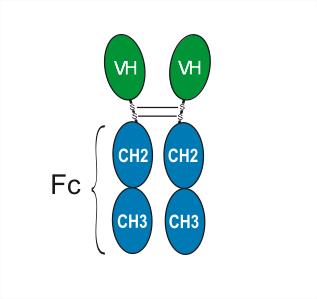
|
| A979 | Domagrozumab Biosimilar(Anti-GDF8 / Myostatin Reference Antibody) Featured |
Domagrozumab is an anti-myostatin humanized monoclonal antibody with a KD value of 2.6 pM for human myostatin. Domagrozumab induces muscle anabolic activity. Domagrozumab can be used in research of duchenne muscular dystrophy (DMD).
More description
|
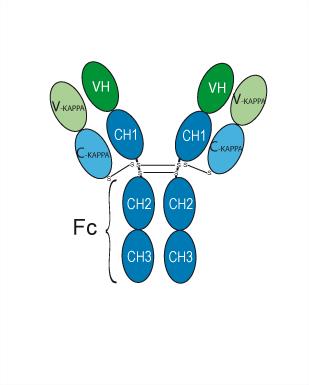
|
| A978 | Tidutamab Biosimilar(Anti-CD3 & SSTR2 Reference Antibody) Featured |
Tidutamab (XmAb-18087) is a humanized and affinity-optimized bispecific antibody (bsAb) targeting SSTR2 binding domain and T-cell binding domain (CD3). Tidutamab possesses a full Fc domain to maintain long serum half-life.Tidutamab eliminates SSTR+ tumor cells by stimulating redirected T cellmediated cytotoxicity (RTcC).
More description
|
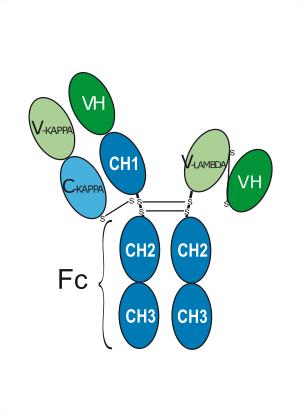
|
| A977 | CSIRO anti-amyloid Beta scFv Biosimilar(Anti-Amyloid Beta Reference Antibody) Featured |

|
|
| A976 | Mipasetamab Biosimilar(Anti-AXL / UFO Reference Antibody) Featured |
Mipasetamab is an IgG1κ antibody targeting to AXL, a tyrosine kinase receptor and an TAM Receptor. Mipasetamab involves in synthesis of ADCT-601 (Mipasetamab uzoptirine), an AXL-targeted antibody-drug conjugate (ADC). ADCT-601 has anti-tumor activity.
More description
|
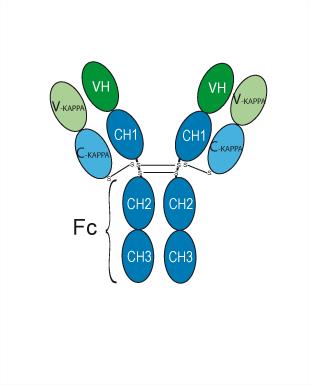
|
| A975 | Acimtamig Biosimilar(Anti-FcgR3a / CD16a Reference Antibody) Featured |
Acimtamig is an anti-TNFRSF8/FCGR3A monoclonal antibody.
More description
|

|
| A974 | Zanolimumab Biosimilar(Anti-CD4 Reference Antibody) Featured |
Zanolimumab (Anti-Human CD4 Recombinant Antibody) is a fully human monoclonal antibody targets CD4. Zanolimumab effectively inhibits T-cell receptor (TCR) signal transduction. Zanolimumab can be used for the research of heumatoid arthritis, psoriasis, melanoma, cutaneous and peripheral T-cell lymphoma.
More description
|
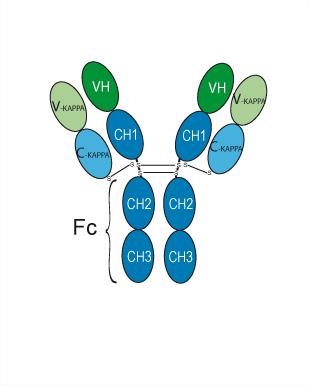
|
| A973 | Daxdilimab Biosimilar(Anti-LILRA4 / ILT7 / CD85g Reference Antibody) Featured |
Daxdilimab is an anti-ILT7 monoclonal antibody, ILT7 is a cell surface molecule specific to the pDC type of dendritic cells. Daxdilimab can be used in acute lung injury (ALI) in patients with COVID-19 infection research.
More description
|
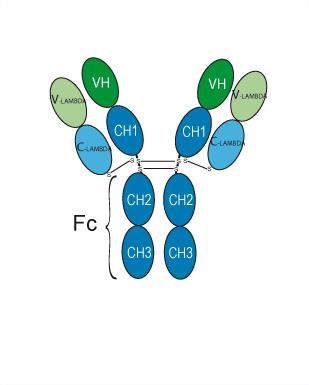
|
| A972 | Inotuzumab Biosimilar(Anti-Siglec-2 / CD22 Reference Antibody) Featured |
Inotuzumab (Humanized Anti-CD22 Recombinant Antibody) is a humanized IgG4, κ antibody that targets human CD22. Inotuzumab can be linked to a toxic agent ozogamicin as an antibody-drug conjugate (ADC). Inotuzumab can be used for the research of acute lymphoblastic leukemia and non-Hodgkin lymphoma.
More description
|

|
| A971 | Tosatoxumab Biosimilar(Anti-Staphylococcus aureus α toxin Reference Antibody) Featured |
Tosatoxumab (AR-301; KBSA301) is a human immunoglobulin G1 monoclonal antibody that specifically neutralizes alpha-toxin (alpha-hemolysin; Hla) of S. aureus. Tosatoxumab binds to an N-terminal epitope of alpha-toxin, thereby preventing functional toxin pore oligomerisation. Tosatoxumab has the potential for passive immunotherapy in the S. aureus pneumonia as an adjunctive therapy to standard antibiotic agent.
More description
|
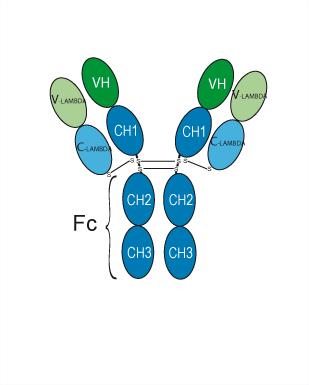
|
| A970 | Bermekimab Biosimilar(Anti-IL-1a Reference Antibody) Featured |
Bermekimab (MABp1) is a human monoclonal antibody that targets interleukin-1alpa (IL-1α). Bermekimab prevents tumour-related inflammation.
More description
|
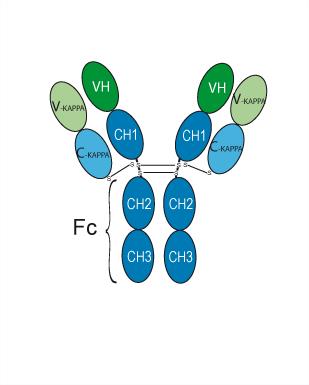
|
| A969 | Ligelizumab Biosimilar(Anti-IgE Reference Antibody) Featured |
Ligelizumab (QGE 031) is a humanized high-affinity monoclonal anti-IgE antibody. Ligelizumab can be used for the research of chronic spontaneous urticarial.
More description
|
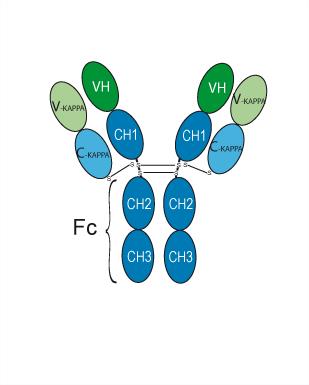
|
| A968 | Golimumab Biosimilar(Anti-TNFSF2 / TNFa Reference Antibody) Featured |
Golimumab (CNTO-148) is a potent human IgG1 TNFα antagonist monoclonal antibody. Golimumab has anti-inflammation activitity and inhibits IL-6 and IL-1β production. Golimumab acts via targeting and neutralizing TNF to prevent inflammation and destruction of cartilage and bone. Golimumab has the anticancer activity and induces cell apoptosis. Golimumab can be used for rheumatoid arthritis, Crohn's disease and cancer research.
More description
|
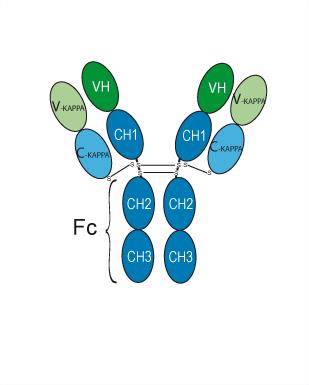
|
| A967 | Tamrintamab Biosimilar(Anti-DPEP3 Reference Antibody) Featured |
Tamrintamab (SC-003 mAb, SC-Mab003, SC34.28ss1) is an ADC Antibody targeting to dipeptidase 3 (DPEP3 or MBD3). DPEP3 is a glycosyl phosphatidylinositol anchored metallopeptidase that is overexpressed in ovarian tumors. Tamrintamab can specifically bind DPEP3-expressing cells to produce cytotoxicity. Tamrintamab can be used in ovarian cancer research.
More description
|
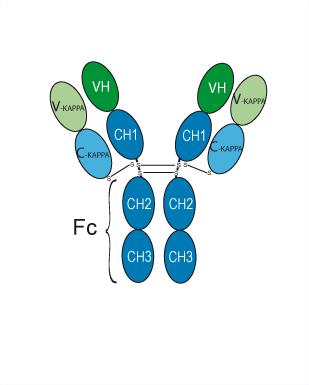
|
| A966 | Tabituximab Biosimilar(Anti-FZD10 Reference Antibody) Featured |
Tabituximab (OTSA101) is a humanized monoclonal antibody against frizzled class receptor 10 (FZD10).
More description
|
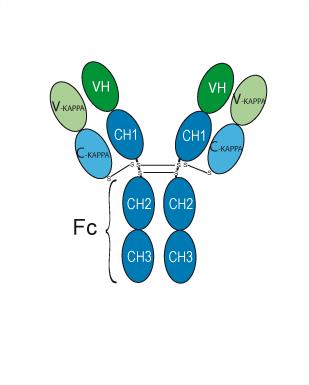
|
| A965 | Rinucumab Biosimilar(Anti-PDGFRB / CD140b Reference Antibody) Featured |
Rinucumab (REGN 2176), a monoclonal antibody, is a PDGF inhibitor. Rinucumab (REGN 2176) could be used for the study of neovascular age-related macular degeneration.
More description
|
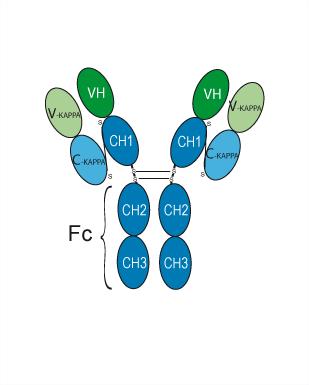
|
| A964 | MOR106 Biosimilar(Anti-IL-17c Reference Antibody) Featured |

|
|
| A963 | IMC-EB10 Biosimilar(Anti-FLT3 / CD135 Reference Antibody) Featured |

|
|
| A962 | LY3076226 Biosimilar (Anti-FGFR3 / CD333 Reference Antibody) Featured |

|
|
| A961 | Dezamizumab Biosimilar(Anti-Serum Amyloid P / SAP Reference Antibody) Featured |
Dezamizumab (GSK 2398852) is a fully humanized recombinant monoclonal IgG1 anti-serum amyloid P component (SAP) antibody, with potential anti-amyloid activity. Dezamizumab triggers immunotherapeutic clearance of amyloid. Dezamizumab can be used in research of Amyloid light-chain (AL) amyloidosis.
More description
|
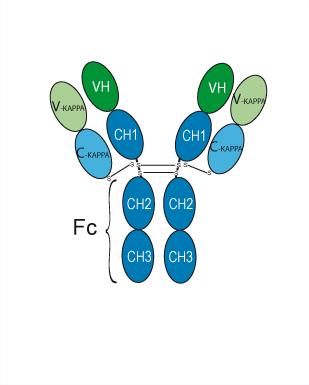
|
| A960 | Lacnotuzumab Biosimilar(Anti-CSF1 / M-CSF Reference Antibody) Featured |
Lacnotuzumab (MCS110) is a neutralizing humanized IgG1/κ monoclonal antibody targeting CSF-1 that prevents CSF-1 from activating the CSF-1R. Lacnotuzumab can be used for the research of pigmented villonodular synovitis.
More description
|
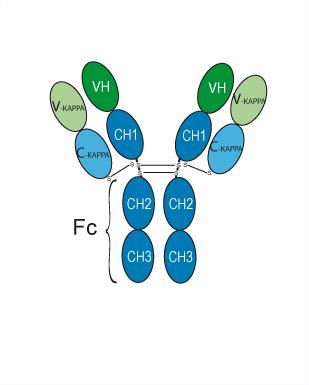
|
| A959 | Dinutuximab Biosimilar(Anti-GD2 Reference Antibody) Featured |
Dinutuximab (Unituxin; APN-311) is a chimeric, human-murine, anti-GD2 monoclonal antibody. Dinutuximab potently enlongs event-free survival and overall survival, in high-risk neuroblastoma treatment, in combination with granulocyte-macrophage colony-stimulating factor (GM-CSF), aldesleukin (interleukin-2 [IL-2]), and isotretinoin (13-cis-retinoic acid [RA]).
More description
|
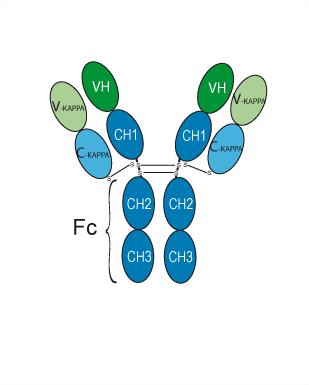
|
| A958 | Racotumomab Biosimilar(Anti-GM3 Reference Antibody) Featured |
Racotumomab (Anti-Human NGcGM3 Recombinant Antibody) is an anti-idiotype monoclonal antibody (MAb). Racotumomab reacts to Neu-glycolyl (NeuGc)-containing gangliosides, sulfatides, and other antigens expressed in tumors. Racotumomab is an active anticancer agent for lung cancer.
More description
|
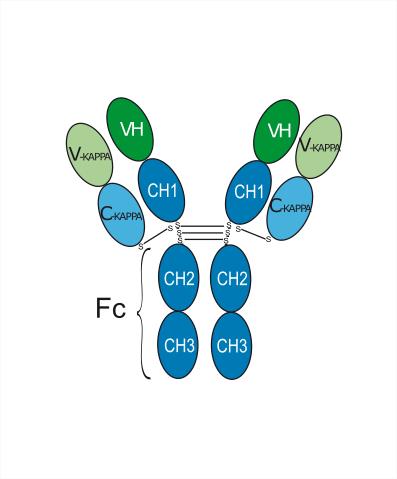
|
| A957 | Nadecnemab Biosimilar(Anti-GFRA3 Reference Antibody) Featured |
Nadecnemab is an IgG4κ antibody targeting to GFRA3, glial cell derived neurotrophic factor family receptor alpha 3. Nadecnemab can be used for research of osteoarthritis of the knee/pain.
More description
|
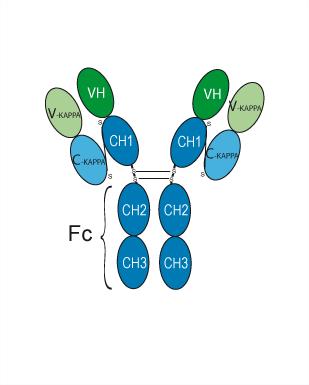
|
| A956 | Ascrinvacumab Biosimilar(Anti-ACVRL1 / ALK-1 Reference Antibody) Featured |
Ascrinvacumab (PF-03446962) is a human IgG2 monoclonal antibody targets ALK-1. Ascrinvacumab shows binding efficiency with human ALK1 with a Kd value of 7 nM. Ascrinvacumab can be used for the research of hepatocellular carcinoma (HCC).
More description
|
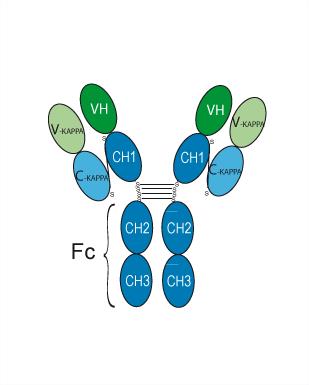
|
| A955 | Ziltivekimab Biosimilar(Anti-IL-6 / IFNb2 Reference Antibody) Featured |
Ziltivekimab (COR-001) is a humanized monoclonal antibody against IL-6 that effectively reduces serum CRP levels. Ziltivekimab possesses anti-inflammatory activity and can be used in research related to chronic systemic inflammation associated with chronic kidney disease (CKD) and cardiovascular diseases such as atherosclerosis.
More description
|
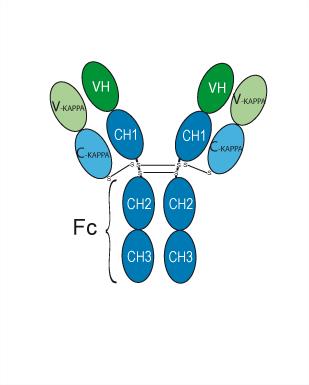
|
| A954 | Seribantumab Biosimilar(Anti-ERBB3 / HER3 Reference Antibody) Featured |
Seribantumab (MM 121) is a fully human IgG2 monoclonal antibody that targets HER3. Seribantumab blocks the activation of epidermal growth factor receptor (ErbB) family members and its downstream signal. Seribantumab inhibits neuregulin 1 (NRG1) fusion-dependent tumorigenesis in vitro and in vivo in breast, lung and ovarian patient-derived cancer models.
More description
|
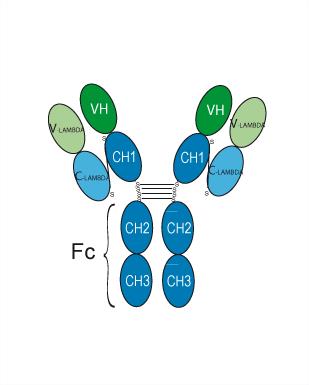
|
| A953 | Retifanlimab Biosimilar(Anti-PDCD1 / PD-1 / CD279 Reference Antibody) Featured |
Retifanlimab is an anti-programmed cell death protein 1 (anti-PD-1) monoclonal antibody (mAb). Retifanlimab can be used for the research of gastroesophageal adenocarcinoma (GEA).
More description
|
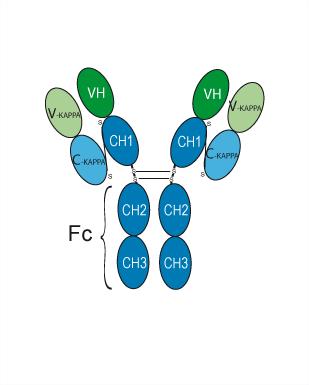
|
| A952 | Basiliximab Biosimilar(Anti-IL-2Ra / CD25 Reference Antibody) Featured |
Basiliximab (CHI 621) is a recombinant chimeric murine/human IgG1 monoclonal anti-interleukin-2 receptor antibody. Basiliximab can be used for the research of renal transplantation.
More description
|
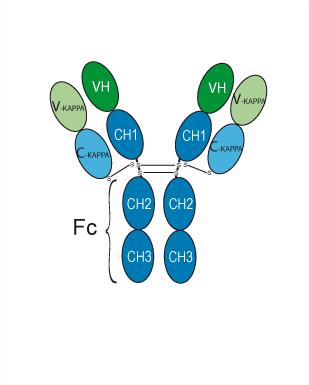
|
| A951 | Pateclizumab Biosimilar(Anti-TNFSF1 / TNFb Reference Antibody) Featured |
Pateclizumab (MLTA3698A) is a humanized antibody against lymphotoxin α (LTα), a transiently expressed cytokine on activated B and T cells (Th1, Th17), which are implicated in rheumatoid arthritis (RA) pathogenesis.
More description
|
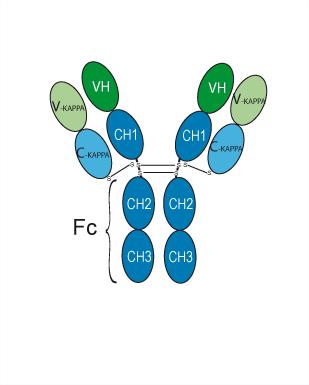
|